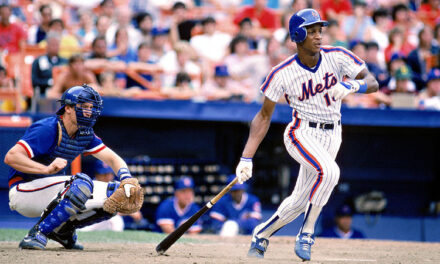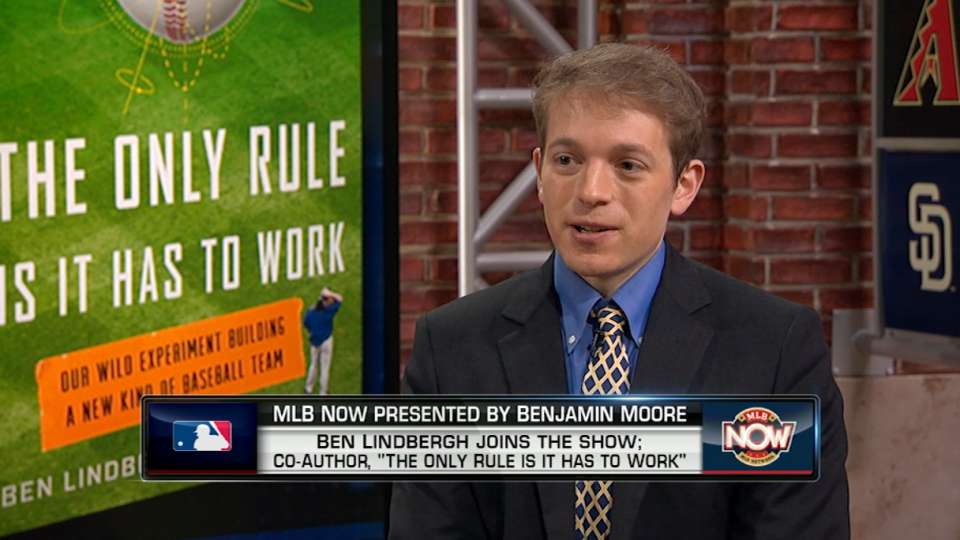
In this age of Major League Baseball, one in which data, analytics and technology are at the forefront and supply teams with substantiated numbers and information, players and front offices are using these advances to help enhance talent and shape organizational philosophies.
While utilizing this technology and data, players, coaches and the front office are able to more accurately assess strengths and weaknesses, along with helping to understand how improvements can be made and where.
In prior player developments, organizations would have their respective ideologies and techniques for improving talent from the bottom up in their systems. With the increased usage of tech and analytics, organizations can more accurately fine-tune player’s skill-sets with measurable data.
For example, if a pitcher is looking to add another pitch to his repertoire, he can use an Edgertronic – high-speed cameras that capture video at 1,000 frames per second – that can give him a much clearer breakdown of his release point, how it’s leaving his hand and the spin to better discern the quality. Pair that with a Rapsodo, a device that generates real-time data such as spin axis and spin efficiency to allow a pitcher to monitor if the pitch he’s designing is getting enough movement, and you’ll find how Trevor Bauer developed his slider after the 2017 season.
This type of data offers intricate precision that allows a player to better understand what the pitch is doing and what he needs to tinker in order to get the results he’s looking for. Being able to have the tangible data to verify how a pitch is moving, spinning, etc. is satisfying and gives a pitcher more assurance than just going off of feel.
On the offensive side, hitters can wear K-Vests, which measures the kinetic sequence along with tracking the body positions at different points of a swing to develop better habits and mechanics at the plate. Many have also taken it upon themselves to receive outside instruction from private hitting coaches, who have personalized and revived player’s careers, with J.D. Martinez and Justin Turner as two prime examples of this.
Teams are also employing more and more conduits – former professionals who act as liaisons between the players and front offices – who analyze and break down data who then bring it to players to discuss. Brian Bannister, the former Mets and Royals pitcher from 2006-10, who hired by the Boston Red Sox as an analyst and pro scout in 2015 and has since become Vice President, Pitching Development and Assistant Pitching coach. In ’15, Bannister was the one who approached journeyman lefty Rich Hill, who was pitching with the Triple-A Pawtucket Red Sox, about throwing his curve more often due to the high spin rate and great separation between his fastball.
Since 2016, Hill has thrown his curve 38.9% of the time, second-most among qualified pitchers in that span. Opposing batters have hit just .213 against Hill’s curve.
In regards to organizations, no team has embraced the growth mindset and changing landscape in player development quite like the Houston Astros. The Astros have fully embraced the technology and analytics from top to bottom.
General Manager Jeff Luhnow has completely overhauled the entire Astros’ system; utilizing technology and employing the data from the lowest rungs of their minor league system. The organization has been leading the charge of implementing high-speed cameras and radar tracking systems in every one of their minor league affiliates, and have essentially gotten a head start among all other teams in gathering data and using that for scouting and development purposes.
The success the Astros have displayed, both behind the scenes and on the field, has made their coaching staff and front office employees extremely in demand, as clubs have swooped in to hire many of their former executives and coaches in hopes to extract what they’ve learned in Houston to their new organization.
The exciting aspect of what a team – such as the Astros – has done with their system means prospects are not necessarily bound by a natural ceiling any longer. Scouts and those in the industry use terms such as ceiling and floor to help project what a player’s best and worst-case scenarios may be in helping to perceive their value. With the use of technology and data, teams are able to unlock players’ latent potential with discernible evidence to back it up.
Perhaps the numbers indicate that a pitcher’s two-seam fastball to left-handed hitters was underwhelming and that he wasn’t utilizing his curve – which had a high spin rate – enough. Then, they asked the pitcher to elevate his four-seam fastball and increase his slider usage to play off the fastball to make it that much more effective.
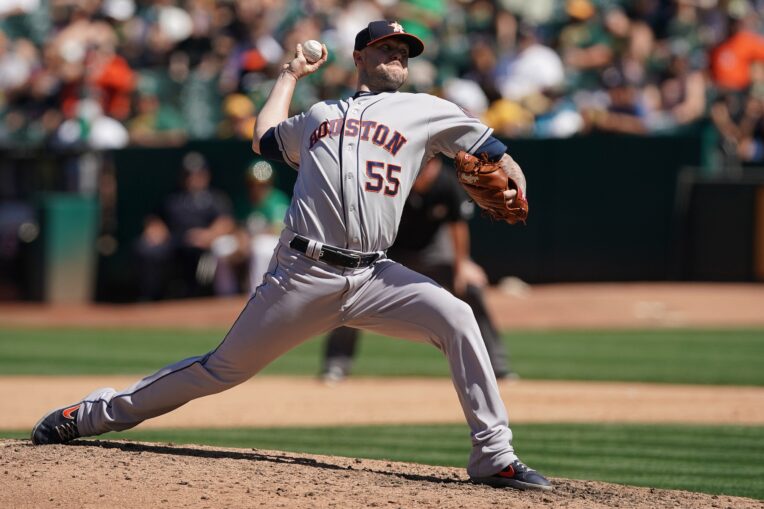
That’s exactly what the Astros asked reliever Ryan Pressly to do, who has since seen big increases in whiff rate and has been one of the more dominant relievers in the game.
The role of player development has reached new heights over the last several years, as organizations are looking for ways in which to gain an edge in the sport. After the release of “Moneyball” in 2003, teams were looking for undervalued players and market inefficiencies by looking at and analyzing data.
This idea swept through Major League Baseball and soon every organization featured a statistical analysis department that was able to discern and break down sabermetrics. The gap between all 30 clubs in searching and being able to find untapped value was essentially shrinking.
The next frontier for front offices was not necessarily finding players who already have value, but about being able to enhance their own internal talent.
Writers Ben Lindbergh (The Ringer, Effectively Wild Podcast) and Travis Sawchik (FiveThirtyEight) sought out to shed light on the techniques, technologies and data used to help shape and enhance players in their new book “The MVP Machine: How Baseball’s New Nonconformists Are Using Data to Build Better Players.”
The book delivers detailed insight into the transformation baseball has undergone in player development, tracing its roots from Branch Rickey and the introduction of a farm system, to the Royals Academy in the early 1970s, to today’s wealth of incontrovertible data which has aided in talent development.
Lindbergh and Sawchik lift the curtains to expose many of the processes, techniques and ideologies that teams and players are using in helping to get players to fully realize their potential in the game. The information shared by the authors in this book is the type of stuff that had gone previously unnoticed by fans, and yet, is crucial in the development and success of players and teams.
I had the privilege of speaking to one of the authors, Ben Lindbergh, about his latest work for this Mets Merized interview.

MMO: Where did the idea of writing a book on player development come from?
Lindbergh: We came to it independently and then ultimately teamed up. Both of us thought that this was the story of baseball in this era; that player development was the area of greatest growth, innovation and excitement when it came to being able to make players better.
I think each of us had a different origin story or player who made us realize that something was going on here. I think in Travis’s case he was covering the Pirates in 2013 when Marlon Byrd was there, and Byrd had kind of a career year at 35. He had changed his swing and gone to see hitting coach Doug Latta and Travis was really struck by how Byrd had become more of a flyball hitter at that age. He had thought at that point having taken so many thousands of swings, getting to the big leagues and staying there for a long time that your swing was probably pretty fixed and set. That there wasn’t a whole lot you could do with it. And then Byrd showed that wasn’t the case; you really could change your career even at that late of an age.
For me, it was another 35-year-old in Rich Hill, who had been bouncing around in the minors, Indy ball and the big leagues for years. When Brian Bannister of the Red Sox told him, “Hey, I looked at your TrackMan data and you’ve got a really incredible curveball, and you should throw that more often,” did he really unlock that latent potential that was there the whole time? He went from Indy ball to being one of the best pitchers in baseball and making more money than he had in his whole career up until that point.
Those stories were really inspirational and eye-opening to us, and we really hadn’t considered that players who had already reached the pinnacle of their profession could possibly unlock even more. And yet, guys like that and J.D. Martinez and Justin Turner, they were doing that and it seemed like that was spreading.
There was this technology and a new emphasis on enhancing player performance and we wanted to be the first to tell that story because I think player development has kind of been under covered historically. There really hasn’t been books on it before, and we thought this would be a way to stake out some new territory and tell a story people might not be aware of.
MMO: How did you and Travis split up the research and writing for the book?
Lindbergh: We sort of decided at the beginning that each of us had certain specialties, interests, connections and geographic locations that made us better to do certain things. Travis is in Cleveland, so it made it convenient for him to talk to Trevor Bauer a lot so he handled the Bauer parts of the book, at least the initial drafts.
I was interested in history, so I worked on the history stuff and I was interested in Bannister and had a relationship with him, so I worked on the Bannister stuff.
I think it sort of worked out where we each had things that we thought we were probably a little bit better suited for that would be easier for us to do. We divided it almost down the middle in terms of workload and divvied up the chapters and said we would each do the initial writing, research and reporting.
Each of the chapters sort of started as Ben or Travis chapter, but by the end, they were all Ben and Travis chapters because we traded chapters back and forth and then we gave each other feedback and revised everything and contributed reporting to each other’s chapter. It ended up being very much a team effort even though we tried to kind of divide and conquer.
MMO: While all 30 clubs employ an analytics department – with some more heavily involved and invested than others – your book takes a deeper dive into the evolution of the sabermetric movement in helping to improve and enhance players already in their systems through the use of data and technology. Can you talk a bit about the change we’ve seen in player development over the years, and the time frame that baseball started to witness this change?
Lindbergh: I think there were precursors to this movement and we wanted to document those because baseball has such a long, rich history. A lot of the things we think are new and unprecedented do turn out to have some precedence somewhere at some time and we wanted to make those connections and show how things that are happening today, in some cases, are things that people were thinking about years ago. I think the game wasn’t really ready for them on a broad scale and in many cases, the technology wasn’t there yet.
I think it’s a confluence of those two things that you needed the sabermetric movement to kind of question some of the traditions in baseball and bring some new thinking into the game. The same disruption that happened with front offices where you had people with non-traditional backgrounds getting hired and making those decisions. I think that’s now filtered down into the coaching ranks and instruction, which previously – like front offices used to be – were really the realm of former players. Former players would become coaches and teach the next generation of players the same things they had been taught, so these same tactics and techniques would be passed down from generation to generation. There was some stagnation in thinking and you had to be a former professional player, a high-level player in almost all cases, to be a big-league coach.
There wasn’t that rich variety of perspectives that you get now. I think teams are looking more at: What can these coaches do and are they intellectually curious? Are they open to new ideas and are they based on reason and evidence? Do they have a track record of making players better? I think all that is more important now than where did you play and how good were you as a player. I think that has really shaken things up a bit.
We portray it as a new phase of the game and it’s sort of an extension of the previous phase and that we’ve been talking about Moneyball for fifteen plus years at this point. The idea of Moneyball is that you’re really just looking for some inefficiencies, some competitive advantage that initially took the form of finding talent that was already out there. Finding players who were already good and already valuable but for whatever reason, the market just didn’t recognize that value whether it was walks and OBP, catcher framing, etc.
The idea was players were already good and teams didn’t realize it and that now becomes very difficult to do. You can’t really find that free talent out there anymore because I think all teams are pretty good at appraising past performance and saying this is what this player was worth.
Now the real way to separate yourself is not to be better at finding talent that’s already out there but to be better at building, creating or enhancing talent. I think that’s the big emphasis now. The technology is there to analyze how players are performing, not just the results but the mechanics and the process. What can they do better whether it’s building a new pitch from scratch, throwing a certain pitch that’s already good more or changing the swing so that if you’re already hitting the ball hard you’re hitting it in the air instead of on the ground.
All of these things are seen as possible now whereas in the past I think the prevailing idea was that you got the most talented prospects and they would ultimately turn out to be the most talented players. These days, I think there’s a little more flexibility there and maybe your raw talent dictates your ultimate outcome a little less than it used to.
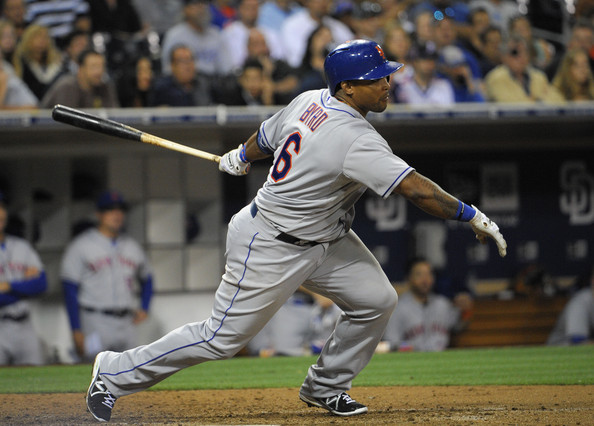
Word.
MMO: I think what’s exciting about the strategies and implementations of the advanced player development system we’re witnessing now is the fact that players are in a sense no longer bound by a natural ceiling. We’ve seen older players like Rich Hill, J.D. Martinez and Justin Turner completely change their projections and become stars.
Lindbergh: Yeah, I think so. And there are unintended consequences of this whole movement and maybe negative consequences. And we talk about that in the book, too. I think it’s an inspirational thing that players who were written off who were believed to be a certain type of player, it turns out that they’re not necessarily bound by that. I think these days we’ve seen so many players who were supposed to have a certain ceiling be much better than that.
The idea of talent is less fixed now than it used to be is an exciting idea when it comes to players like Byrd, Turner, Martinez or Hill; guys who already made it to the big leagues but also with prospects, young players and amateur guys who are just coming up now and are being exposed to all these ideas early on. That’s not to say that natural talent isn’t still a factor, it certainly is. There are some people who probably don’t have to apply themselves quite as hard and make it to that level and there are others who might apply themselves incredibly hard and will still not make it to that level. But I still think it dictates what you turn out to be a little less than it used to be.
In the past, you might’ve been written off because you couldn’t throw a fastball this speed or you weren’t a big guy and you weren’t believed to have the potential to hit for power. But now maybe you can throw your curveball or slider thirty or forty percent of the time and if it’s really good then that can make up for a lackluster fastball. Or if you’re not a big guy you can still optimize your swing, you can hit the ball farther out in front of the plate. You can hit for a lot of power even though you don’t have the build of a traditional power hitter. I think that’s a pretty powerful idea and it’s one that we hoped would extend beyond baseball as well.

MMO: Trevor Bauer is a central figure in the book. Can you talk a little about his ascension and his role in shaping the use of advanced technology and data in today’s game?
Lindbergh: There were pluses and minuses with featuring Bauer, of course. Off the field and the things he’s said on Twitter, he is far from a perfect poster boy for this movement and he’s a flawed person for sure. But he has been a pioneering player and probably has done more than any other player in this era to push player development forward through his own success when we talk about designing a slider and making that into one of the best pitches in baseball and being one of the best pitchers in the game last year.
I think it goes beyond his own performance to the influence he’s had on other players, whether it’s teammates and front offices who’ve looked at the things he’s done. I mean, he’s introduced a lot of tactics, techniques and technology to the game that prior to him just weren’t a part of baseball or were kind of on the fringes but weren’t being used actively by a major leaguer. He’s set the example of showing that you really can benefit from these things.
He was the first player to use the Edgertronic cameras to show that it can play an important part in pitch design. He sort of created the science of pitch design. Previously, pitchers would pass on pitches to other players or pitching coaches would pass on to players, but it wasn’t such a scientific tech process the way it is now.
Today, you’re pairing these high-speed cameras with Rapsodo spin-tracking devices and you’re saying this is what I want my pitches to look like and I want to tunnel them so they play really well with each other. I’m just going to throw off the mound and see how they look based on this footage and data and I’ll just tweak pitch-by-pitch until I get closer to what I want these pitches to be.
I think Bauer has shown the potential of that process and it’s been widely adapted. It’s difficult to buy an Edgertronic camera these days because they’re often sold out because teams are buying them up as quickly as they’re manufactured. And that’s in large part because he showed there was potential there.
Whatever you think of him as a person, I don’t think that we could’ve pulled the story of modern player development accurately and comprehensively without explaining the role that he’s played in it.

MMO: A name that Mets fans will remember is Brian Bannister, who you and Travis also profile in the book. He’s now the Vice President / Pitching Development & Assistant Pitching Coach for the Red Sox. I loved this quote from the book in which Bannister talks about the work he put in with Zack Greinke: “I realized that my future was not about me competing for a Cy Young Award or being an All-Star, but about taking that information, studying it more than anybody and using it to help the best players in the world become even better.” What makes Bannister such an influential figure in the world of pitching?
Lindbergh: The Bannister chapter might be my favorite part of the book. He really helped us out a lot in sharing his perspective. Before I teamed up with Travis, I had envisioned maybe writing a whole book on players like Bannister; former players who are now in this role we call the conduit who are conveying this information from the front office to the field. That has been such a big part of this process because Bannister was a player who didn’t throw very hard and was always looking for information and ways to make himself better. He was pitching at the time that PITCHf/x came on; the first pitch-tracking technology that was widely available. He used that to evaluate himself, developed a cutter, prolonged his career and made himself a bit more effective.
I think the greater impact that he’s had has been post-playing days when he transitioned to this hybrid role where right now he is the assistant pitching coach for the Red Sox but he is also the vice president of pitcher development. He’s kind of this go-between where players will listen to him as he was a player himself and been in uniform. He’s comfortable in that world but he’s also really familiar with the physics, the advanced concepts, stats and ideas these front office people talk about.
I think some of these insights were there but there was a bottleneck between the front office and the field where someone upstairs might say that so and so should throw this pitch more often, but if that message wasn’t getting passed down to the players then it wasn’t doing anyone any good.
It turns out, I think, that you need these communicators, these people who are comfortable in both of these worlds to pass that message along and to translate that information to both directions. A lot of teams are now employing former big leaguers who are recently retired players who have an interest in analysis and are kind of in similar roles as Bannister, and I think it’s an exciting idea.
Fifteen years ago or so, when all of those stats started pervading the game, there was this kind of us versus them mentality and it was jocks versus nerds and players being skeptical and thinking why do we need this. I didn’t have this when I was coming up, what are these people who have never played the game going to tell me about playing? Now I really don’t think there’s this adversarial relationship anymore, I think both sides have realized that they have a lot to learn from one another and I think someone like Bannister has really personified that progress where you have both sides working together to make players better.
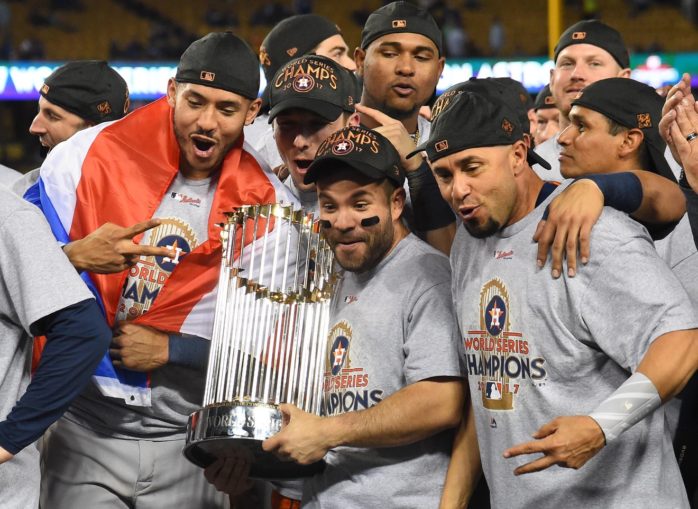
MMO: You detail an entire chapter to the Houston Astros, an organization that is seemingly ahead of the rest in terms of technology investment, resources and using new techniques to enhance players. We’ve seen other teams come in and hire away many of the Astros front office executives, coordinators and coaches in hopes of bringing some of that wealth of knowledge and info to their organization. What has made the Astros such a powerhouse when it comes to player development?
Lindbergh: In our book proposal I don’t even know if the Astros were mentioned. I think we wanted to feature some team and explain how they were implementing all of this because it is sort of this bottom-up movement with these outsiders and players with independent coaches and their ideas have been implemented into the game. We wanted to show how one team has really made use of all this and we didn’t know which team that would be.
As we started doing reporting for the book and as we had a lot of conversations all of them just kept pointing to the Astros. They were clearly at the forefront of all of this and I think they were just the first to realize that this was the next frontier. They had been among the leaders in evaluating players and they built a model in St. Louis – Sig Mejdal and Jeff Luhnow – to evaluate amateur players and prospects and use college stats to try and forecast who would be good big leaguers.
They realized in Houston in 2013-14 that the players they were able to draft in St. Louis because no one else was looking at the same things they were looking at, those players were being snapped up even before they fell to the Astros. Other teams had caught up. And that’s what I was talking about earlier with the parity when it came to player evaluations.
They realized that the next great opportunity was in player development, to bring that same rigor to player development that had been brought to player evaluation. They really pivoted to player development, they hired people like Mike Fast from Baseball Prospectus, who had an interest in applying data to help players. They were very aggressive in turning over their entire minor league staff and also expanding it so that anyone who wasn’t on board and who was sort of set in their ways and didn’t want to adjust to the way that the Astros wanted to do things were let go and replaced with someone who would. They were kind of ruthless when it came to that more than most teams tend to be.
They also invested in technology and bought 75 Edgertronic cameras before some teams had one and they installed them at all the ballparks in their system. I think they realized this was important because they had a couple of high-profile failures like releasing J.D. Martinez just before he broke out. They were the team who drafted Mark Appel first overall and he never made the majors. I think in a way those very glaring failures made them realize that they had to be better.
The Astros changed their whole player development pipeline and process so that when you enter the system now you get a full workup essentially on day one. You throw with Edgertronics and Rapsodos in the bullpen, or swing sensors if you’re a hitter on your bat and you get a diagnosis of what your flaws are and how you can be better and what you should be aiming for. I think that’s what they realized: You can’t just tell players to be better at something, you have to tell them how to be better at something.
I think they really closed the gap between scouting and player development where traditionally those were two different worlds. You had the scouts and scouting director bringing in players and then you had the player development staff and player development director whose job it would be turning those players into productive big leaguers. Those two worlds didn’t really interact all that much and I think the Astros unified them so that now when you’re bringing a player into the Astros system when you’re trading for him, signing him, drafting him, I think it’s always part of that discussion: Can we make him better? What can we do to improve that player?
And I think that’s a really revolutionary idea.
MMO: I’m surprised more teams haven’t bought more into this organizational thinking like the Astros have. The relative investment in doing something like this organizationally seems to me like it would pay off big in the long run.
Lindbergh: Yes, I think so. The Astros had a five-year head start on some teams and I think that a lot of teams have gotten some of these devices but there’s much more than checking that box and saying yeah, we bought a camera, we bought this Rapsodo device. That’s a good start but you have to not just have these things lying around but have people who are really qualified to use them and understand them. It’s not just a novelty in something players try once and experiment with. It’s something that you’re using on a regular basis and your team really has the infrastructure to support.
The Astros hired these player development coaches at every level that kind of provide this statistical support to the coaches and that was a really important role because those coaches would interact with the front office so everyone would be on the same page. You’d go from one level of the minor league system to the next and players would be hearing the same thing.
There’s a consistency and instruction and I think that takes some time to implement. Not every team is willing to kind of clean house the way that the Astros did under Luhnow. It can also be difficult depending on your ownership to convince them to loosen the purse strings a little to invest in these areas even though it’s cheaper to hire coaches or buy cameras than it is to sign a big free agent. It’s still an area where there’s not a lot of history behind it so you’re trying to sell your ownership on something that is a fairly recent innovation. And you can’t always point to an immediate day one improvement from it. You can’t say this is going to be worth exactly this to us the way that you can with a player where you’ll say he’ll be worth three wins above replacement.
It’s harder to forecast what buying a camera gets you so I think it can be tough at times to convince these owners to make the investment even though it seems obvious that it would be beneficial in the long run. All teams are still not paying their minor leaguers nearly enough for them to just focus on baseball, which aside from ethical concerns just seems very short-sided and counterproductive if you’re trying to win.
I think it’s definitely happening and by the time a book comes out about something I think teams are probably aware that this is going on and maybe the book has helped raise some awareness of it as had the success of teams like the Astros, Dodgers, Yankees and the Rays. I think we will see more and more of it and in the next five to ten years of baseball it’ll probably be about teams investing more and more in this and this becoming not just something that a few teams are really implementing in a top to bottom way but that most or all teams are.
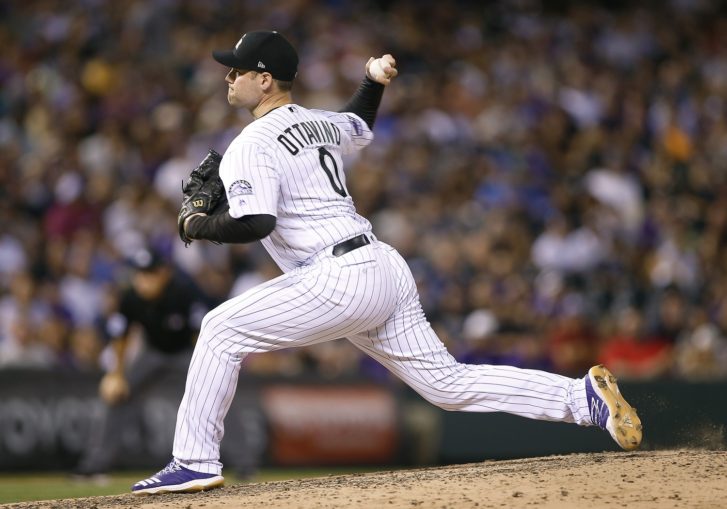
MMO: I really enjoyed the Amateur Ball chapter in which you underwent the three-part intake process that any player goes through at Driveline for an assessment. Can you talk a little about your experience and how influential Driveline has become with their tutelage and analysis?
Lindbergh: My first book, The Only Rule Is It Has to Work, was more of a first-person story, more of a participatory element where Sam Miller and I went and took over an Independent League baseball team for a summer and we wrote that story from a first-person perspective. This book is not like that, this book is telling this tale of other people’s successes.
We thought it would be nice to have at least one section where we had a sort of hands-on approach and experience some of it ourselves. We hoped that it would make it more relatable to the average reader who is not a professional baseball player. It’s one thing to read about Justin Turner and Trevor Bauer doing these things, but of course, those guys were more focused on being professional athletes than most of us are. The hope was that by trying out some of this stuff ourselves and explaining what it was like for us we could kind of convey more clearly the potential of these devices and techniques.
I went to Driveline and put myself through their intake process and also worked with some other technologies around the country that teams and players are using these days and for me, it was enlightening and eye-opening. Of course, I had no illusions about being anywhere close to a pro athlete. But I wanted to be able to measure myself and so I threw off a mound with all of these cameras tracking me and took swings with sensors and had them all over my body tracking my movements.
It was somewhat humbling, of course, to get the data and see just how far I was from a real player but I think I also got a sense of if I were dedicated to this that these technologies really could be transformative. You can see exactly where you’re going wrong with a precision that you couldn’t before when it was all about eyeballing things and using your experience to hopefully perceive something. Some of this stuff just couldn’t be seen because it was so subtle or it happened so quickly and now you can get these precise readouts which show you exactly what you’re doing at every millisecond and you can diagnose flaws that previously would’ve gone undetected.
Once you can diagnose something then in theory you can fix them. It’s really powerful and going through that myself and making some minor improvements and just being able to see what was wrong with me essentially made it all much more clearer to me and to be in that
A lot of players have gone to Driveline and have rebuilt themselves in some way, and there are plenty of success stories like Bauer, Adam Ottavino and Matthew Boyd. But that ethos, that idea of questioning everything and why are we doing this, is the best thing we can do. Let’s question everything and test everything and try to determine the best way to do things.
I don’t think Driveline has all the answers and I don’t think they would say they have all the answers but they’re trying to get to the answers or reexamine what we think the answers are. And I think it’s very good that someone is doing that because a lot of times tradition can just become ingrained and people will forget why exactly you’re doing something a certain way other than that’s always how it’s been done before. It’s a good thing to constantly question and revisit those things, especially as we get new and better information.
MMO: Where do you foresee player development going next? Is it with wearables, virtual reality, injury-prevention or something else?
Lindbergh: I think in the short term it’ll probably be a wider adoption of the things that we wrote about in the book, including pitch design and making that a part of every player’s routine. Just getting everyone comfortable with these technologies. I think that will happen naturally just as more players get exposed to them in college and high school and they see big leaguers doing these things. They’ll be comfortable working in this way by the time they get drafted. You may start to see players move more quickly [through the minors] because the things that once would’ve taken them years of trial and error and having to make these discoveries as you went along, players are now coming into pro ball knowing these things already.
The wearable technology will continue to spread and hopefully be more affordable because at this point there are certain devices that I think can help players but not everyone can afford them. It would be bad if people from certain economic backgrounds were excluded from the future of the game because they didn’t have access to these tools. Hopefully, that will change, maybe MLB will continue to make investments in that area to ensure access to this technology, I think that would be beneficial.
I think teams are continuing to look into psychology and mental skills and ways to integrate all of that. Teams are starting to form high-performance departments and sports science departments; kind of taking cues from some other sports and looking at ways to make sure players are always in the best physical shape possible. Are they sleeping well? Are they getting the right nutrition? Does their exercise plan make sense and are they overexerting themselves?
I think that ties into – if you want to call it the next frontier – injury prevention, which I think some teams are making strides in. Having pitchers change their deliveries to reduce the stress on their body for instance. There’s more to do in that area but I don’t know if we’ll ever get to the point where you won’t see pitchers blowing out their elbows. I think there are just some natural limitations in anatomy where there are weak points and as pitchers throw harder and harder they’re going to break down inevitably. Teams obviously want to keep players healthy because they collectively spend billions of dollars every year on players who are not able to take the field and that’s bad for them, it’s bad for the players and it’s bad for the sport not to have the best players playing at all times.
I’ll be excited to see what teams are able to achieve. You hope that whatever insights are gleamed they will be shared throughout the game. Maybe for a while you might see certain teams have an edge there but players move around, front office members move around and hopefully, they will bring that information with them no matter where they go so that more players can take advantage of it. I think that would be best for the sport as a whole if those preventive measures are available to as many players as possible.
MMO: Thanks very much for your time, Ben. Best of luck with the book.
Lindbergh: Thanks very much.
Follow Ben Lindbergh on Twitter, @BenLindbergh
Purchase “The MVP Machine: How Baseball’s New Nonconformists Are Using Data to Build Better Players” here.
Read more of Ben’s work for The Ringer here.





